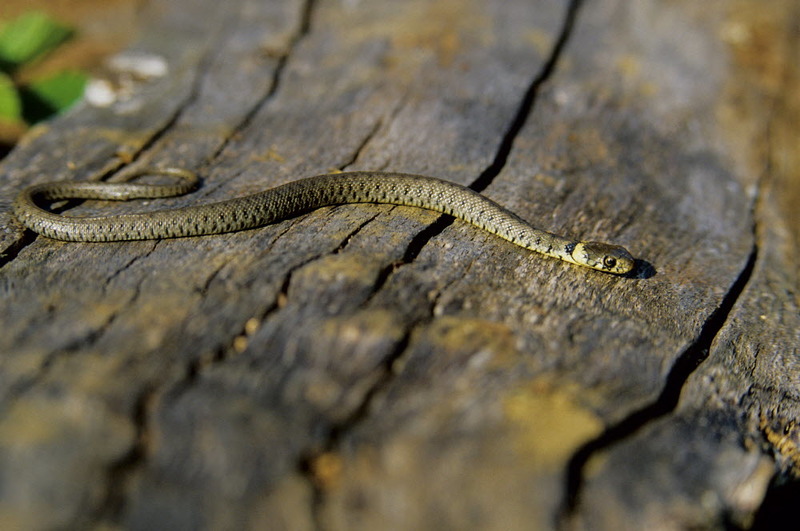Grass snake habits
Adults emerge from hibernation in March/ April. Males emerge before females. They stay close to their hibernation nest for the first few days. Mating takes place in April. Females lay eggs in June and July in a place where rotting vegetation is creating heat. This includes compost heaps! 15cm long young hatch in late summer, looking like miniature adults.
They prefer to live close to water, often in long, damp grass. Garden ponds can be a useful feeding ground for grass snakes. Grass snakes have a seasonal diet, taking different prey at times when they are easiest to catch. In spring, they eat fish, in the summer they hunt newts and for the rest of the year they eat frogs and toads. They will also catch mice and voles where they can, but this is rare.
Photo of young grass snake (below) by David Slater.

